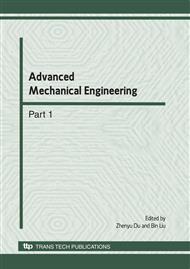p.1104
p.1110
p.1115
p.1119
p.1126
p.1132
p.1137
p.1142
p.1147
Investigation of Belt Conveyor Transfer Chute Configurations to Reduce Dust Generation Using CFD Modeling
Abstract:
“Passive” dust control systems for belt conveyor transfer stations have become increasingly popular in recent years. Effective design relies on a fundamental understanding of the flow of granular material and air throughout the transfer chute. This paper presents an investigation into the flow properties of the air and particles in the enclosure for different transfer chutes based on computational fluid dynamics (CFD) modelling. A multiphase Euler-Euler model was applied to develop a 3D model of the transfer chute. Experiments were undertaken to verify the theoretical models, with overall results indicating good correlation. Furthermore, a number of alternative transfer chute configurations were modelled to investigate the effect of geometry on dust generation.
Info:
Periodical:
Pages:
1126-1131
Citation:
Online since:
June 2010
Authors:
Price:
Сopyright:
© 2010 Trans Tech Publications Ltd. All Rights Reserved
Share:
Citation:


